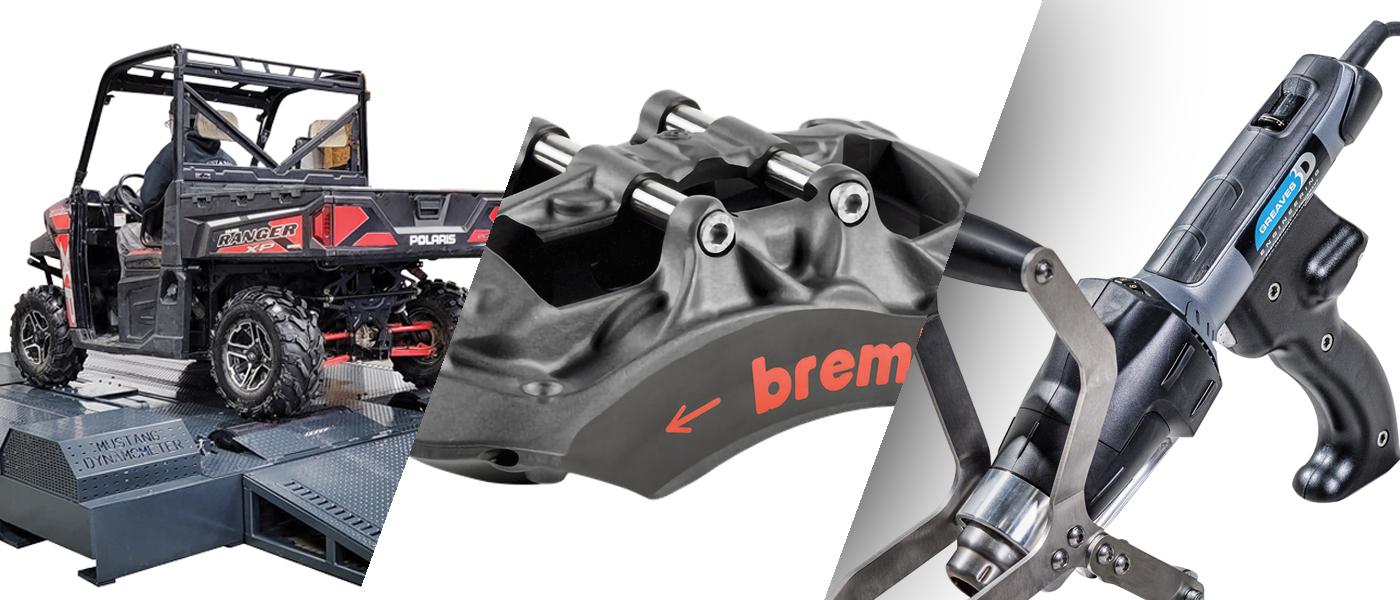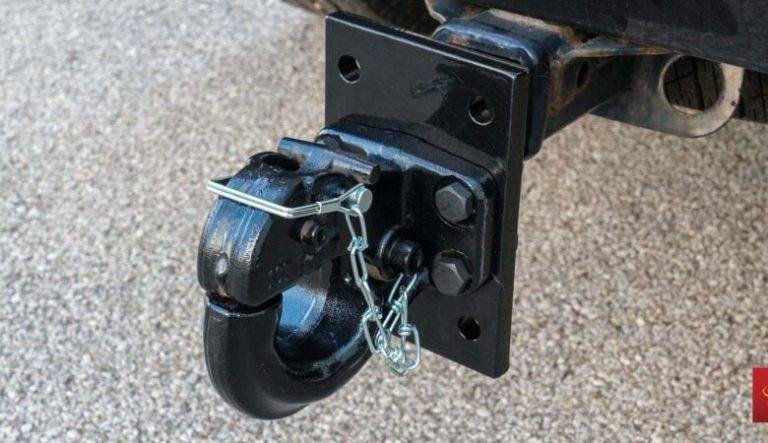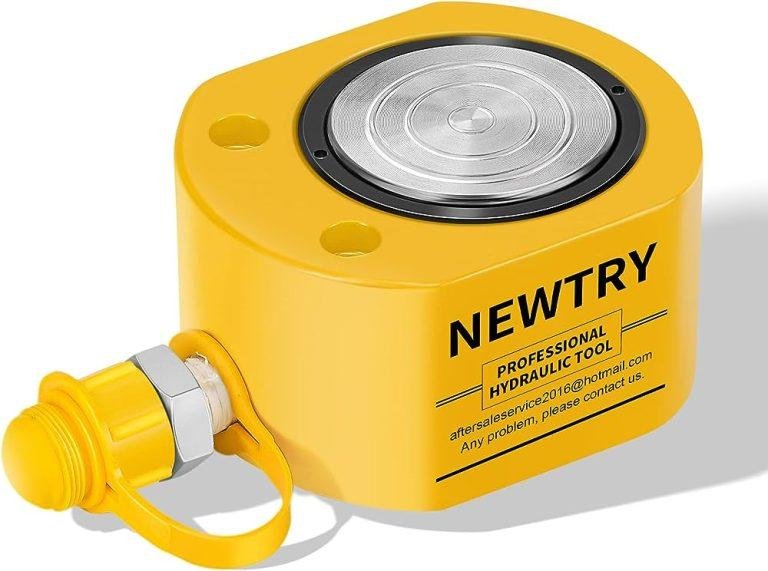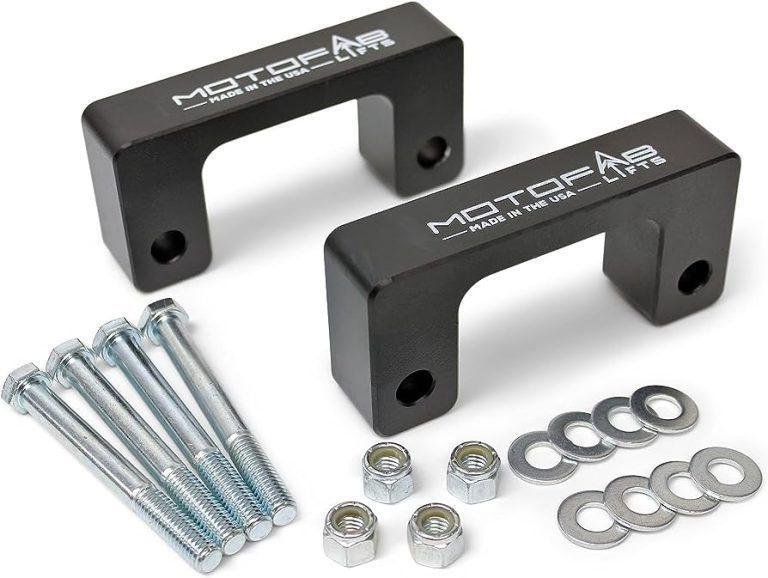A 5th wheel attaches to a hitch in the center of a truck bed, while a gooseneck attaches to a hitch in the rear of a truck bed. A 5th wheel is often used for larger, heavier trailers, while a gooseneck is used for smaller, lighter trailers.
The key difference is the location of the hitch attachment point on the truck bed. The choice between a 5th wheel and a gooseneck depends on the type of trailer being towed and personal preference. 5th wheels provide better maneuverability and stability, making them suitable for longer trips and larger trailers.
Goosenecks, on the other hand, are more flexible and easier to lock and unlock, making them ideal for lighter loads and shorter trips. We will explore the differences between 5th wheels and goosenecks in more detail, including their hitching mechanisms, towing capacities, and pros and cons. Whether you are a seasoned trailer owner or a first-time buyer, understanding these distinctions will help you make an informed decision for your towing needs. So, let’s dive in and explore the world of 5th wheels and goosenecks.

Credit: www.performanceracing.com
Understanding The Architecture
The distinction between a 5th wheel and a gooseneck lies in their architecture. While a gooseneck hitch attaches to the bed of a truck, a 5th wheel mounts in the truck bed. This variation impacts towing stability and weight distribution.
When it comes to hauling heavy loads, it’s important to understand the difference between a 5th wheel and a gooseneck. These two types of hitches are commonly used for towing trailers, but they have distinct designs and attachment mechanisms. Let’s take a closer look at each type:
Different Designs And Attachment Mechanisms
- 5th wheel hitch:
- This type of hitch is commonly used in recreational vehicles (rvs) and larger trailers.
- It is mounted inside the bed of a pickup truck, right above the rear axle.
- The primary attachment point is a kingpin, which is located on the trailer’s front end.
- The hitch has a plate that receives the kingpin and locks it securely in place.
- The design of the 5th wheel hitch allows for more stability and maneuverability.
- It offers a tighter turning radius, making it easier to navigate sharp corners and parking lots.
- Gooseneck hitch:
- The gooseneck hitch is often used in heavy-duty applications, such as commercial trailers and livestock trailers.
- It is attached to the pickup truck’s frame, just above the rear axle.
- The primary attachment point is a ball hitch, which protrudes from the bed of the truck.
- The trailer’s coupler is a tube with a ball that fits over the hitch in the truck bed.
- The gooseneck hitch provides a high weight-carrying capacity and is popular among contractors and farmers.
- It allows for a tighter turning radius than a bumper hitch but not as tight as a 5th wheel hitch.
Understanding the architecture of both the 5th wheel and gooseneck hitches is essential for safe and efficient towing. Whether you’re planning a cross-country road trip or hauling heavy equipment, choosing the right hitch can make all the difference. So, let’s dive deeper into the hitching mechanisms of each type.
The Hitching Mechanism Of A 5Th Wheel
- The 5th wheel hitching mechanism is characterized by:
- A plate mounted in the bed of the pickup truck, known as the “jaw”.
- The trailer’s kingpin, which is secured inside the hitch’s jaw.
- A lever or handle that allows the driver to lock and unlock the jaw.
- Safety features like visual indicators to ensure a secure connection.
- The hitching process involves backing the truck into position so that the kingpin aligns with the hitch’s jaw.
- Once aligned, the driver can lower the trailer onto the hitch until the kingpin is fully seated inside the jaw.
- Finally, the driver locks the jaw securely, preventing any accidental disconnection while towing.
The Hitching Mechanism Of A Gooseneck
- The gooseneck hitching mechanism is defined by:
- A ball hitch installed in the bed of the pickup truck.
- The trailer’s coupler, which features a tube and a ball that fits over the truck’s hitch.
- The hitch is secured by a locking mechanism, typically a pin or coupler latch.
- Before hitching, the driver needs to line up the trailer’s coupler directly above the gooseneck ball.
- Once aligned, the driver lowers the trailer’s coupler onto the gooseneck ball until it is firmly seated.
- Finally, the gooseneck hitch is secured with the pin or coupler latch, ensuring a safe and stable connection.
Now that you have a better understanding of the different designs and hitching mechanisms of both 5th wheel and gooseneck hitches, you can make an informed decision based on your specific towing needs. Remember, safety should always be a top priority, so take the time to properly hitch your trailer and inspect the connection before hitting the road.
Key Differences In Construction
The key differences in construction between a 5th wheel and a gooseneck are crucial to understand for those in the market for a towing system. While both offer their advantages, the 5th wheel connects directly to the truck’s bed, providing increased stability and maneuverability, while the gooseneck attaches to the truck’s frame, offering more towing capacity and a smoother ride.
When it comes to choosing between a 5th wheel and a gooseneck trailer, understanding the key differences in their construction can help you make an informed decision. Let’s explore the structural differences, weight distribution and towing capacity variations, as well as the advantages and disadvantages of each design.
Structural Differences Between 5Th Wheels And Goosenecks:
- 5th wheels connect to the truck bed through a hitch that is mounted inside the bed, creating a direct connection between the trailer and the truck.
- Goosenecks, on the other hand, attach to the truck using a hitch that extends above the truck bed, resembling a gooseneck shape.
- 5th wheels have a raised forward section that typically includes a bedroom, while goosenecks have a flatbed design, allowing for more flexible cargo space.
Weight Distribution And Towing Capacity Variations:
- 5th wheels distribute weight more evenly between the tow vehicle and trailer, leading to enhanced stability while towing.
- Goosenecks tend to distribute more weight towards the rear of the truck, which can result in reduced stability under certain conditions.
- Due to their design, 5th wheels generally have higher towing capacities compared to goosenecks, making them suitable for hauling larger loads.
Advantages And Disadvantages Of Each Design:
5th wheels:
- Advantages:
- Provide a more spacious living area due to the raised section over the truck bed.
- Greater maneuverability and ease of towing, especially in tight spaces.
- Enhanced stability, especially during turns and on uneven roads.
- Disadvantages:
- Require a truck with a specific hitch setup, limiting the vehicles that can tow them.
- The raised section causes a loss of bed space on the truck.
Goosenecks:
- Advantages:
- Allow for more flexible cargo space, making them suitable for hauling a variety of items.
- Do not require a specific hitch setup, making them more compatible with different vehicles.
- Less intrusion into the truck bed, allowing for increased storage space.
- Disadvantages:
- Less stability, particularly when towing heavier loads.
- Limited interior space compared to 5th wheels.
While 5th wheels offer more living space, stability, and maneuverability, goosenecks provide greater versatility and less interference with the truck bed. Understanding the structural differences, weight distribution, and advantages and disadvantages of each design can help you determine which type of trailer best suits your needs.
Factors To Consider When Choosing
Choosing between a 5th wheel and a gooseneck involves several key factors, including towing capacity, maneuverability, and hitch set-up. Weighing these considerations can help make the decision easier and ensure a smooth towing experience.
Compatibility With Different Types Of Vehicles
- Fifth wheels are specifically designed to be towed by pickup trucks with a specialized hitch in the truck bed, making them compatible with a wider range of vehicles compared to gooseneck trailers.
- Gooseneck trailers, on the other hand, require a gooseneck hitch installed in the bed of a truck, limiting their compatibility mainly to heavy-duty trucks.
Maneuverability And Ease Of Towing
- Fifth wheels offer better maneuverability due to their unique design, which allows for a tighter turning radius compared to gooseneck trailers.
- Gooseneck trailers tend to be more stable during towing, especially at high speeds, making them suitable for long-distance travel.
Considerations For Payload And Cargo Capacity
- Fifth wheels generally have higher payload and cargo capacities compared to gooseneck trailers, making them ideal for carrying heavier loads.
- Gooseneck trailers have a lower payload capacity but can still accommodate significant amounts of cargo.
When choosing between a 5th wheel and a gooseneck, it is important to consider factors such as compatibility with different types of vehicles, maneuverability and ease of towing, as well as payload and cargo capacity. Ultimately, the decision should be based on your specific towing needs and preferences.
Safety Considerations
The difference between a 5th wheel and a gooseneck lies in their hitching mechanisms. While a 5th wheel uses a plate and pin setup, a gooseneck relies on a ball and coupler connection, influencing safety considerations when towing. Understanding these distinctions is crucial for a secure and risk-free towing experience.
5th wheel and gooseneck hitches are both popular options for towing heavy loads, but there are some important differences to consider when it comes to safety. In this section, we will explore the safety considerations associated with these two types of hitches.
Stability And Handling Differences:
- 5th wheel hitches generally offer better stability and handling compared to gooseneck hitches.
- The design of a 5th wheel hitch allows for a smoother ride and reduces the chance of swaying or fishtailing.
- Gooseneck hitches, on the other hand, may be less stable due to the location of the hitch point at the rear of the truck bed.
Proper Hitching And Connection Procedures:
- Both 5th wheel and gooseneck hitches require proper hitching and connection procedures to ensure safe towing.
- When hitching a 5th wheel, it is crucial to engage the locking mechanism correctly and secure the trailer kingpin in the hitch jaws.
- Gooseneck hitches require the use of a ball and coupler system, which should be properly aligned and locked in place.
- Regular inspection and maintenance of both types of hitches are essential to ensure their integrity and safety.
Impact On Overall Driving Experience:
- The choice between a 5th wheel and gooseneck hitch can significantly impact the overall driving experience.
- Due to its design, a 5th wheel hitch may provide a smoother and more stable towing experience, making it easier to handle the trailer.
- Gooseneck hitches can sometimes lead to a more rigid and less comfortable ride due to the connection point at the rear of the truck bed.
- It is crucial to consider your towing needs, preferences, and the weight distribution when deciding between the two hitches.
When it comes to towing heavy loads, safety should always be a top priority. Understanding the stability and handling differences, as well as following proper hitching and connection procedures, will help ensure a safe towing experience. Additionally, considering the impact on the overall driving experience can help you make an informed decision when choosing between a 5th wheel and a gooseneck hitch.
Remember to always adhere to manufacturer guidelines and consult with professionals if you have any doubts or concerns about towing safety.
Pros And Cons Of A 5Th Wheel
A 5th wheel and a gooseneck have a few differences. A 5th wheel is generally larger and offers more living space, while a gooseneck is easier to install and maneuver. However, a gooseneck may have limited space compared to a 5th wheel.
If you’re in the market for a new rv or trailer, you’ve probably come across the terms “5th wheel” and “gooseneck. ” While both designs serve the purpose of towing, there are several key differences between them. In this section, we’ll focus on the advantages and limitations of a 5th wheel design, helping you make an informed decision before your next adventure.
Advantages Of A 5Th Wheel Design
- ### spacious interiors: One of the biggest advantages of a 5th wheel is its spaciousness. These trailers often have multiple slide-outs, providing ample living space for you and your family. The raised front section of the trailer allows for a larger overhead bedroom, making it feel more like a home on wheels.
- ### enhanced stability: Thanks to the unique design, the weight of a 5th wheel is distributed over the truck’s rear axle. This creates a more stable and secure towing experience, especially when compared to traditional travel trailers. The connection point in the truck bed allows for better weight distribution, minimizing the chances of swaying or fishtailing.
- ### maneuverability: Unlike gooseneck trailers, 5th wheels have a tighter turning radius, making them easier to maneuver in tight spaces. This is particularly beneficial when navigating through narrow campsites or reversing into a parking spot. If you frequently find yourself in confined areas, a 5th wheel might be the more practical choice.
- ### better towing experience: Due to the connection point being in the truck bed, the towing experience with a 5th wheel is generally smoother. The placement of the trailer’s weight over the truck’s rear axle allows for improved handling and control, resulting in a more comfortable ride.
- ### versatile floor plans: 5th wheel trailers offer a wide range of floor plans to suit various preferences and needs. With multiple levels and additional features such as bunk beds or a separate den, you can find a layout that fits your specific requirements and enhances your camping experience.
Limitations And Drawbacks Of A 5Th Wheel
- ### truck dependency: Owning a 5th wheel means you’ll need a compatible tow vehicle, typically a pickup truck. This requirement limits your options and may not be ideal if you already own a different type of vehicle or prefer the convenience of a smaller car for daily use.
- ### storage challenges: Due to the elevated bedroom area, 5th wheels often lack exterior storage compartments. This can make it difficult to store outdoor equipment such as bicycles or camping gear. Additionally, if you need to access storage during travel, you’ll need to unhook the trailer or crawl into the truck bed to reach the storage areas.
- ### height restrictions: 5th wheels typically have a taller profile compared to goosenecks. This height may restrict access to certain areas, such as low-clearance bridges or parking garages. It’s essential to consider any height limitations you may encounter along your planned travel routes.
- ### cost: 5th wheel trailers generally come with a higher price tag compared to gooseneck trailers. In addition to the purchase cost, you’ll need to factor in any necessary upgrades to your tow vehicle and potential maintenance costs for the unique towing system.
- ### limited versatility: Although versatile in terms of floor plans, 5th wheels are primarily designed for rv camping. If you plan to use your trailer for other purposes or require a more flexible towing solution, a gooseneck design might offer greater versatility.
Now that you’re aware of the advantages and limitations of the 5th wheel design, you can weigh your options and choose the type of trailer that best suits your needs. Whether you prioritize spaciousness, stability, maneuverability, or versatility, both 5th wheels and goosenecks have their unique advantages to enhance your outdoor adventures.
Pros And Cons Of A Gooseneck
A gooseneck offers increased stability and maneuverability, making it ideal for towing heavier loads. However, it requires a specialized hitch and may limit bed space. In contrast, a 5th wheel provides more living space and easier hitching, but can be less stable and adaptable on rough terrain.
Both options have their advantages and drawbacks, so it’s important to consider your towing needs and preferences before making a decision.
A gooseneck trailer hitch is a popular choice among towing enthusiasts for its unique design and specific advantages. However, as with any towing method, there are also some limitations and drawbacks to consider. Let’s explore the pros and cons of a gooseneck design.
Advantages Of A Gooseneck Design:
- Increased stability: A gooseneck hitch provides improved stability due to its unique attachment point in the truck bed, which enhances the overall towing experience.
- Higher weight capacity: Gooseneck hitches can typically handle heavier loads compared to traditional fifth-wheel hitches, making them ideal for towing large trailers or heavy equipment.
- Better maneuverability: The design of a gooseneck trailer hitch allows for a tighter turning radius, making it easier to navigate around corners and in tight spaces.
- Enhanced bed space: One of the notable benefits of a gooseneck design is that it leaves the truck bed relatively free, allowing for additional cargo space or the ability to transport other equipment alongside the trailer.
Limitations And Drawbacks Of A Gooseneck:
- Truck bed restriction: Installing a gooseneck hitch requires modifying the truck bed, as a hitch ball is mounted directly into the bed. This can limit the bed’s usability for other purposes when not towing.
- Limited compatibility: Gooseneck hitches are primarily designed for pickup trucks with a dedicated towing package. If your vehicle doesn’t have this option, you may need to invest in additional modifications or consider an alternative towing method.
- Challenging installation: While gooseneck hitches offer advantages, the process of installing them can be more complex compared to other towing systems. It often requires professional installation or advanced diy skills.
- Reduced maneuverability when unhitched: Once your trailer is unhitched, a gooseneck hitch can limit the bed’s usable space. This can be an inconvenience when you need to utilize the full capacity of the truck bed for hauling other items.
Considering the advantages and limitations mentioned above, a gooseneck trailer hitch can be an excellent choice for specific towing needs. However, it is crucial to evaluate your requirements and preferences to determine if it is the right fit for your vehicle and towing applications.
Choosing The Right Option For Your Needs
Choosing the right option between a 5th wheel and a gooseneck can be a crucial decision when it comes to meeting your needs for towing. Understanding the key differences between these two types of hitches is essential to make an informed choice.
Choosing between a 5th wheel and a gooseneck trailer might seem like a daunting task, especially if you’re new to towing. But fear not! By evaluating your personal towing requirements, considering future needs and flexibility, and navigating budgetary considerations, you can make an informed decision that suits your needs perfectly.
Evaluating Personal Towing Requirements:
To choose the right option, it’s essential to evaluate your personal towing requirements. Consider the following factors:
- Towing capacity: Determine the maximum weight your vehicle can tow and ensure both the 5th wheel and gooseneck options fall within this limit.
- Payload capacity: Calculate the weight of the cargo you plan to tow and select a trailer that offers enough payload capacity.
- Vehicle size: Take into account the size and maneuverability of your vehicle to ensure it can handle the dimensions and weight distribution of the chosen trailer.
- Towing experience: Consider your experience level with towing. If you’re a beginner, a 5th wheel may be easier to maneuver due to its design.
Considering Future Needs And Flexibility:
When making a decision, it’s wise to think about your future needs and the flexibility each option offers. Take these aspects into account:
- Upgradability: Assess whether your towing needs may change in the future. A gooseneck may offer more flexibility for modifications and upgrades.
- Usability: Determine how frequently you’ll need to use your truck bed for other purposes when not towing. A gooseneck allows for full bed access, while a 5th wheel may require the removal of hitch components.
- Versatility: Think about the types of trailers you plan to tow. If you anticipate towing different trailers, a gooseneck might provide more versatility.
Navigating Budgetary Considerations:
Your budget plays a crucial role in choosing the right option. Consider the following points when weighing your budgetary constraints:
- Trailer cost: Compare the cost of 5th wheels and goosenecks, factoring in any additional equipment needed.
- Ownership costs: Research the maintenance and operating costs associated with each option. Look for potential savings or added expenses in fuel efficiency, repairs, or insurance premiums.
- Resale value: Investigate the resale value of both 5th wheels and goosenecks to make an informed decision about long-term cost implications.
By evaluating your personal towing requirements, considering future needs and flexibility, and navigating budgetary considerations, you’ll be equipped to choose the option that best suits your needs. Happy towing!
Frequently Asked Questions Of What Is The Difference Between A 5Th Wheel And A Gooseneck?
Why Change From 5Th Wheel To Gooseneck?
Switching from a 5th wheel to a gooseneck has several advantages. Gooseneck hitches offer better stability and maneuverability, resulting in a smoother towing experience. With a gooseneck setup, the weight of the load is evenly distributed between the tow vehicle’s front and rear axles, improving overall balance.
This allows for better control and safer towing on the road. Additionally, gooseneck hitches have a higher weight capacity compared to 5th wheel hitches, enabling you to tow heavier loads. Gooseneck trailers are also more versatile, as they can be easily converted for other uses, such as hauling livestock or cargo.
Overall, the switch to a gooseneck hitch provides improved towing performance, increased load capacity, and greater flexibility.
Can You Pull A Fifth Wheel With A Gooseneck Ball?
Yes, you can pull a fifth wheel with a gooseneck ball.
What Are The Disadvantages Of A Gooseneck Trailer?
Gooseneck trailers have some drawbacks you should consider. They require a special hitch, limiting compatibility with other vehicles. Their design may also reduce maneuverability, making parking and tight turns challenging. These trailers have a higher upfront cost due to their specialized nature.
Additionally, their size and weight can affect fuel efficiency, resulting in increased fuel consumption. Gooseneck trailers also have a lower ground clearance, making them less suitable for off-road or uneven terrain. Another disadvantage is that the high hitch point may cause stability issues when going over bumps or uneven roads.
Lastly, their unique design makes them less versatile for different hauling needs compared to other trailer types. Consider these disadvantages when deciding if a gooseneck trailer is right for you.
Can A 5Th Wheel Hook Up Be Used To Pull A Gooseneck Trailer?
No, a 5th wheel hook up cannot be used to pull a gooseneck trailer.
Conclusion
Understanding the difference between a 5th wheel and a gooseneck is crucial for anyone in the market for a trailer hitch. Although they may appear similar at first glance, these two towing systems have distinct features and uses. The 5th wheel hitch is known for its stability and maneuverability, making it suitable for larger trailers and heavy loads.
On the other hand, gooseneck hitches offer flexibility and versatility, making them ideal for hauling a variety of loads. When making a decision, it is important to consider factors such as towing capacity, payload, and the type of trailer being towed.
Assessing these factors will help determine the most suitable hitch for your needs. Furthermore, seeking guidance from a knowledgeable professional can provide valuable insights and ensure a safe towing experience. So, whether you’re a seasoned traveler or a weekend adventurer, choosing the right hitch will contribute to a smooth and enjoyable journey.





